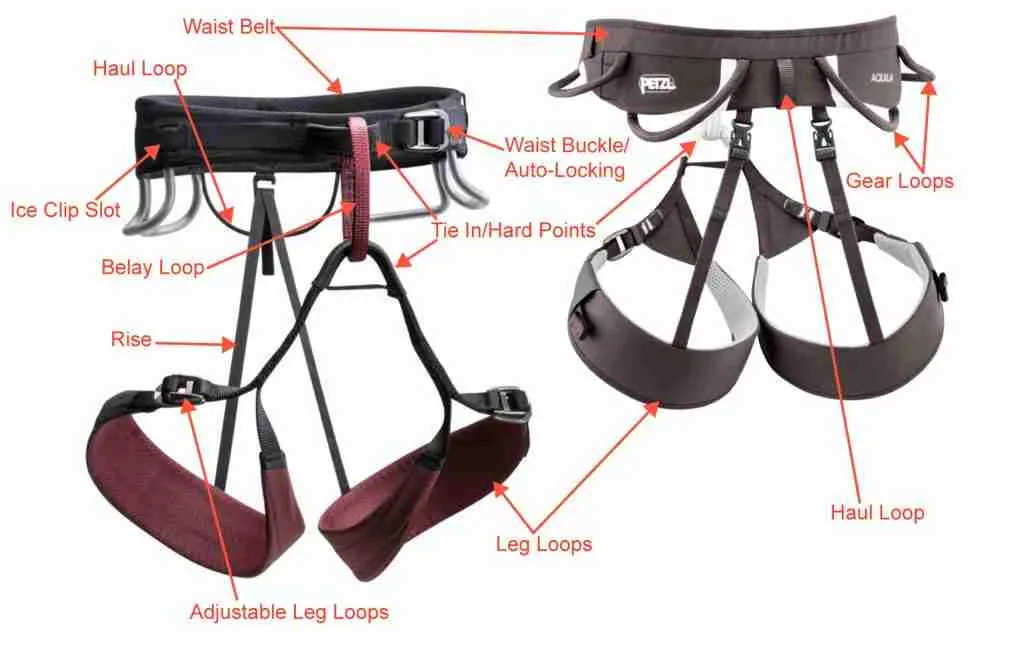
Waist Belt
The waist belt is the main support for the harness, wrapping around your waist. It is padded and adjustable to provide comfort and security during climbs.
Leg Loops
Leg loops are designed to provide comfort and mobility while climbing. They are often padded and adjustable, allowing for a snug fit around the legs.
Gear Loops
Gear loops are used to carry carabiners, quickdraws, and other climbing equipment. These are typically made of reinforced fabric or plastic for durability.
Belay Loop
The belay loop is the strongest part of the harness. It is used during belaying and rappelling to securely attach the belay device or other essential gear.
Tie-in Points
Tie-in points are the areas of the harness where the rope is attached. These are typically reinforced to provide a secure connection during climbs.
Haul Loop
The haul loop is a small loop located on the back of the harness, typically used to carry a second rope or haul gear during multi-pitch climbs.
1. Waist Belt
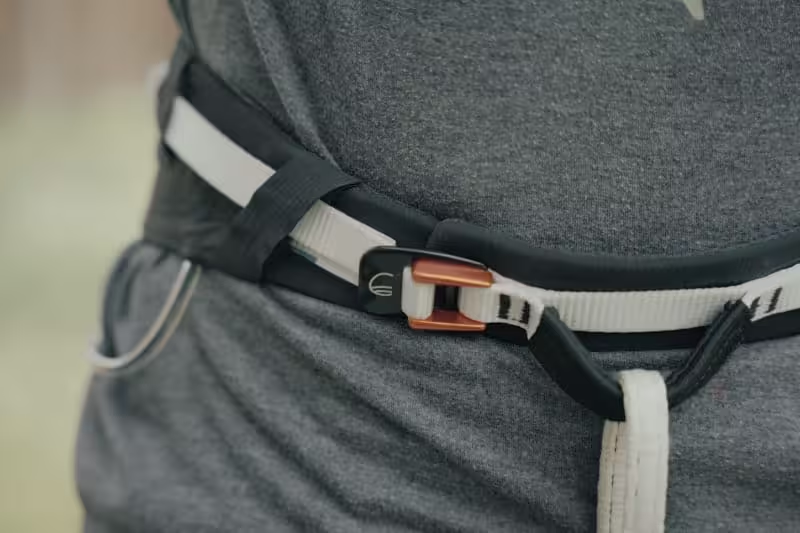
The waist belt should sit comfortably around your waist, above your hips. It should be snug but not too tight. You should be able to fit two fingers between the belt and your body, but it shouldn't slide down when you hang in it.
2. Leg Loops
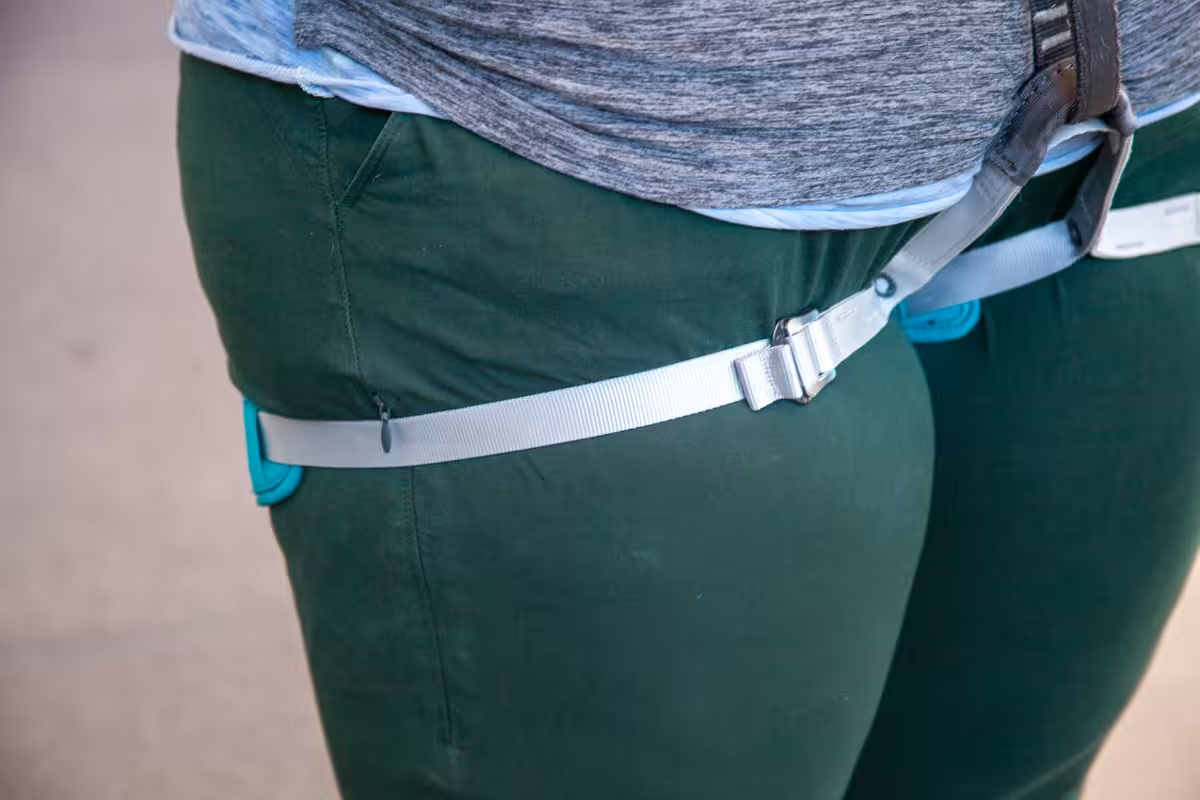
The leg loops should fit comfortably around your thighs. Like the waist belt, they should be snug but not too tight. Some harnesses come with adjustable leg loops for a more customized fit.
3. Tie-in Points
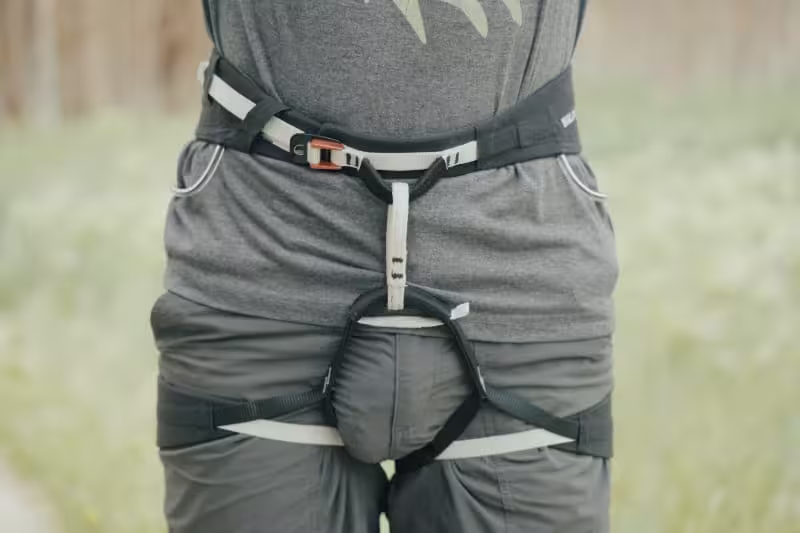
Make sure the tie-in points (where the rope attaches) are properly aligned. These points should be centered, allowing for proper load distribution when you're climbing.
4. Double-Back Buckles
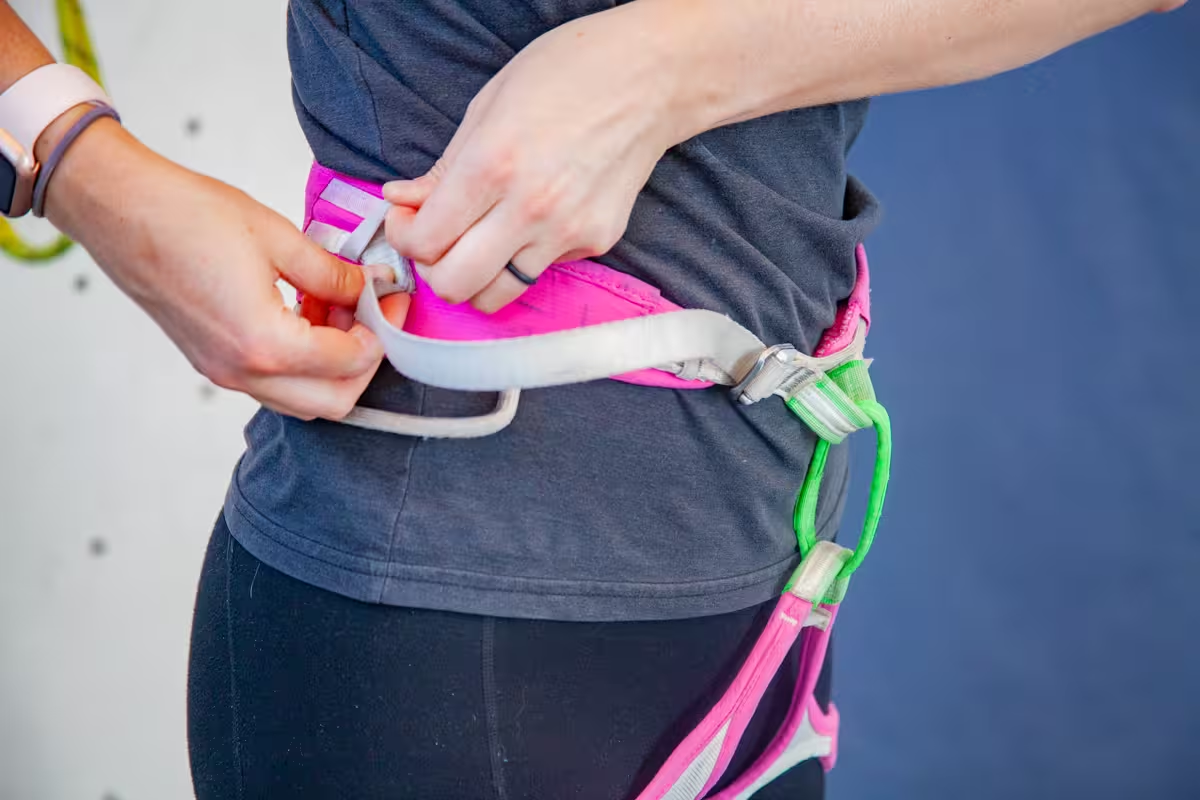
Ensure all buckles (especially on the waist belt) are double-backed if your harness requires it and any extra tail length tucked away.